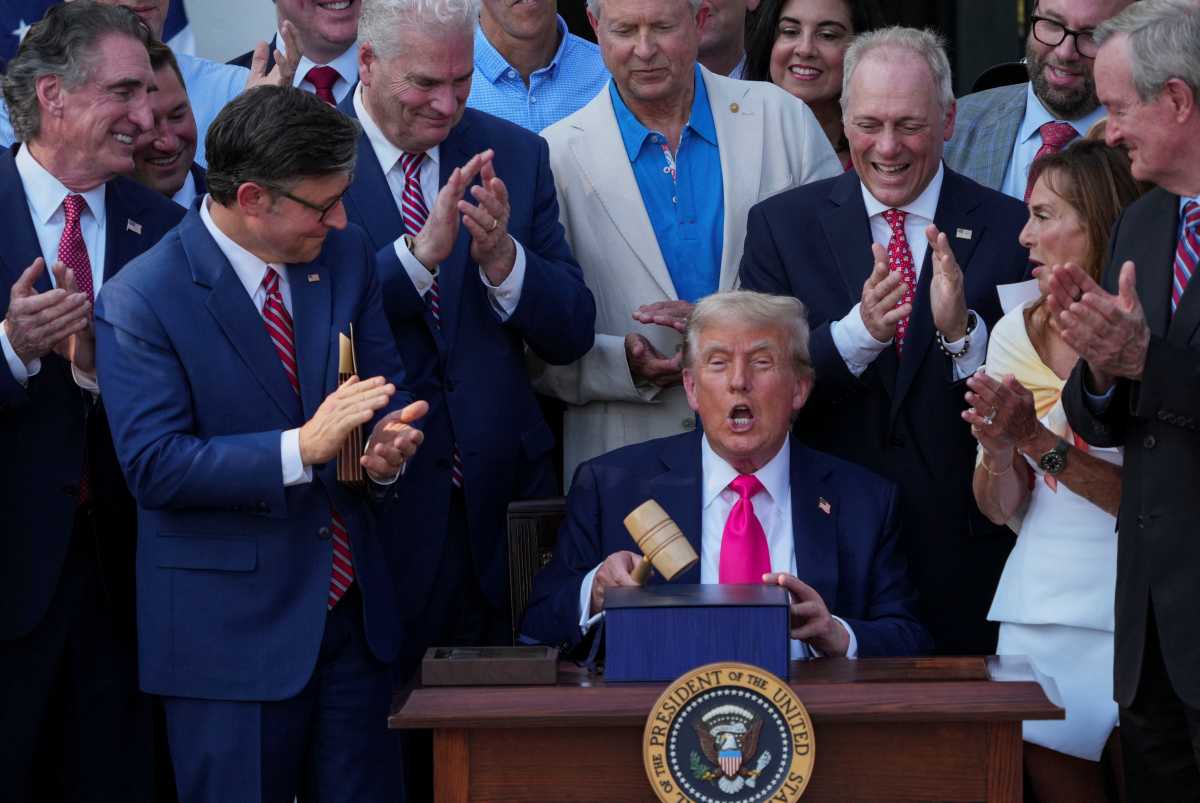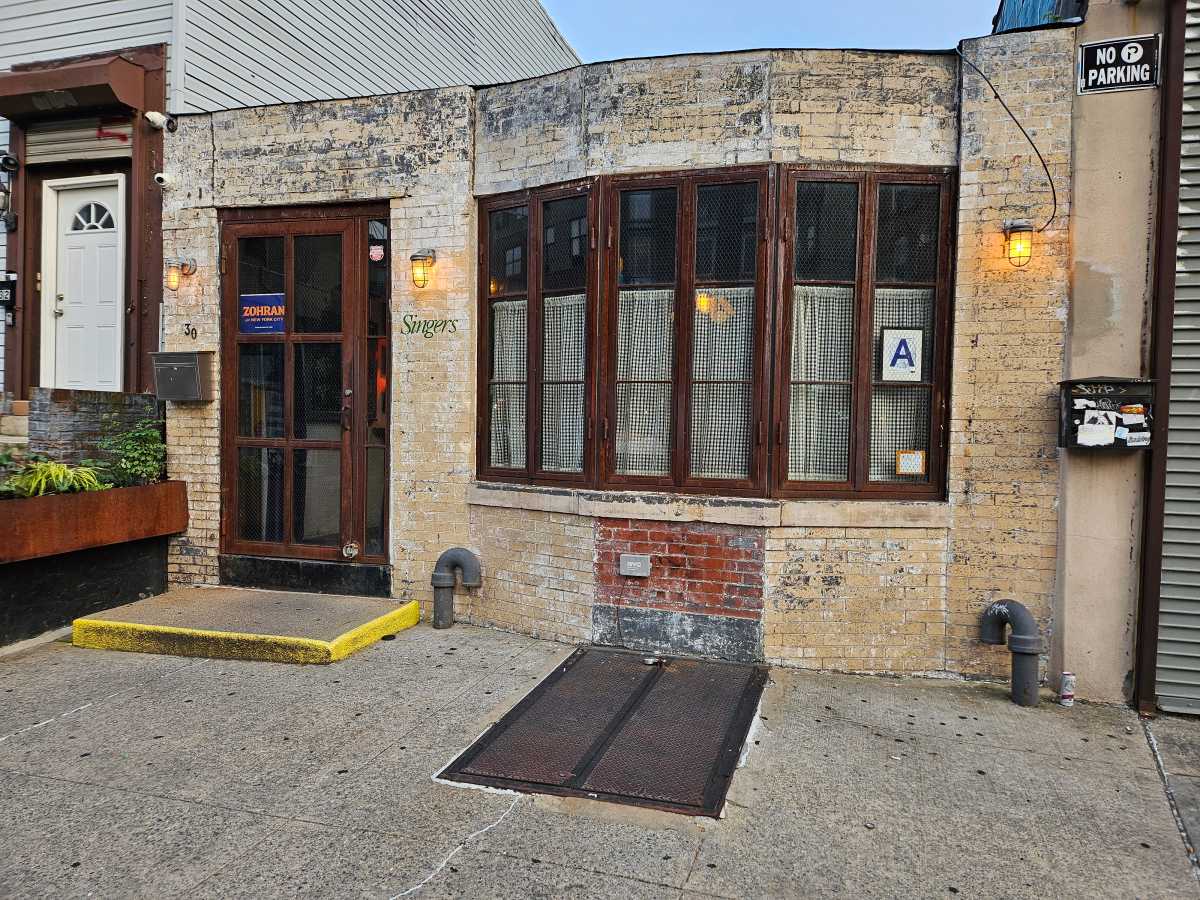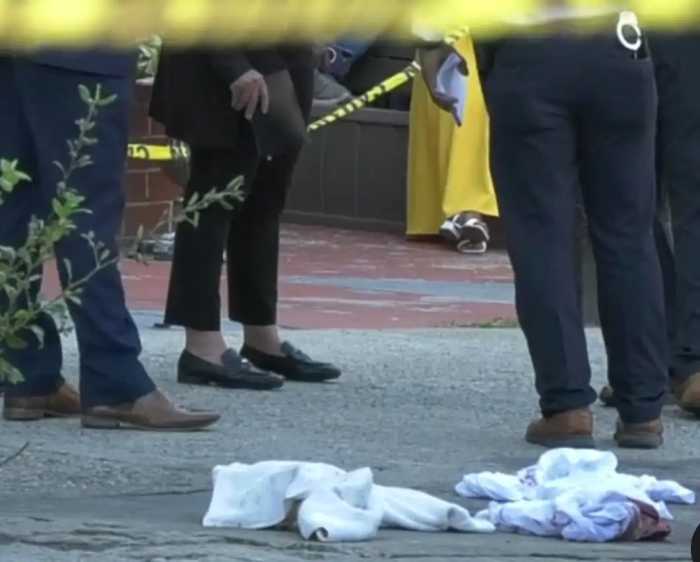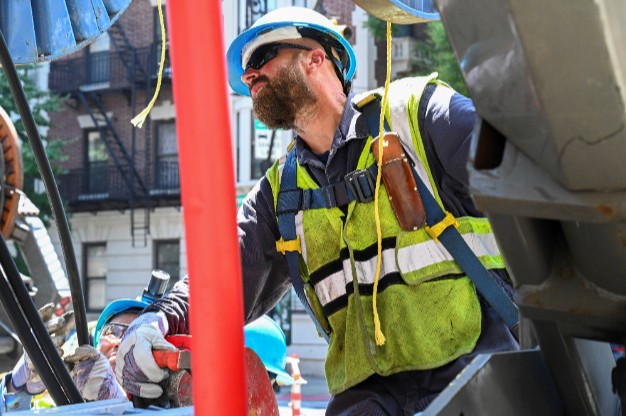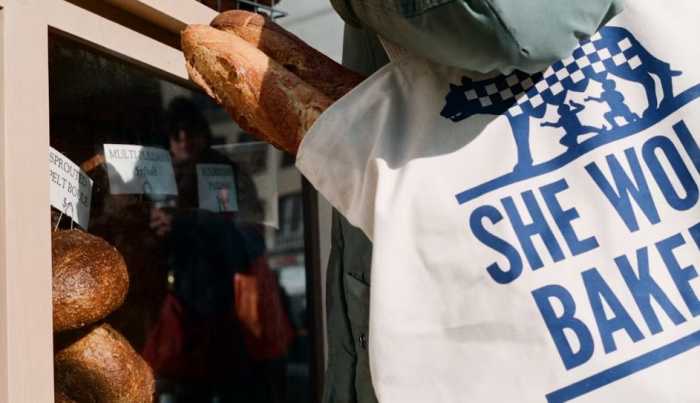By Sean Sweeney
Selma stands just over 5 feet, and her 110 pounds, slight frame and youthful appearance give her the look of a sylph.
Last summer, Selma was increasingly vexed by the street peddlers who were hanging their merchandise along her building’s wall. She had been calling the First Precinct for weeks to send a sector car over to chase the interlopers but no help ever came.
So, fed up, she glued warning signs onto the wall: “Private Property Do Not Display Merchandise on Our Building Wall.” When she went down later to check, the signs were removed and replaced by schlocky, unframed paintings.
Not an aggressive person, Selma politely asked the peddler, a burly fellow a foot taller than she, to remove his stuff from her building. Not only did he refuse, he got nasty, spitting out expletives and pushing his face within inches of hers. Choosing her battles, Selma retreated back upstairs, fuming.
Frustrated and angry — who can blame her? — Selma went medieval. She got a bucket of water and poured it out her window onto the street. An hour later, the police appeared, not in response to her repeated calls to chase the peddlers, but to arrest Selma. The peddler had gotten wet and called 911. Some emergency.
So, Selma was led from her studio in handcuffs and spent a beautiful June day locked up at the First Precinct for defending her home and honor. Welcome to Soho 2007.
Selma’s is not an isolated incident. Take Ian, a commercial airline pilot from Sullivan St. To avoid the sidewalk congestion on Prince St., he decided he could do better by walking in the street close to the parked cars. Not close enough, however, because the side of a car struck Ian, injuring his hip.
Ian’s injury is all the more an affront because Prince and Spring Sts. are off-limits to all peddlers on weekends.
In 1999, in response to more than 800 letters from local businesses and residents, the Department of Small Business Services restricted all vending on Prince and Spring Sts. on weekends.
This worked for a couple of years and both residents and visitors could navigate the narrow sidewalks with greater ease. Then came 9/11 and for several years afterwards police from the First Precinct were deployed to Ground Zero. The peddlers took advantage of this tragedy and quickly invaded the neighborhood again.
What will it take to reclaim our streets from the scores of illegal street peddlers?
They create hazardous and unsafe conditions, harass those who complain, and damage the economy of Soho.
Examples:
• At one time, Soho was the center of the art world. This community generated hundreds of millions of dollars in revenue, jobs and taxes. More than one leading gallery owner has related that a major factor for the exodus of the majority of art galleries to Chelsea was that serious collectors were turned off by the carnival atmosphere that the peddlers had engendered in Soho and they were unwilling to shop in what essentially had become a souk.
• Several years ago, during a street fair for the Soho Guggenheim, about a dozen people fell 15 feet through the sidewalk to the basement of the Mercer Hotel when one of the sidewalk steel plates that are iconic to Soho’s hollow sidewalks collapsed from their weight. So crowded was Prince St. with illegal peddlers and customers that emergency-response vehicles were unable to enter Prince St. from Broadway. Instead, first responders actually had to go through the Guggenheim to reach the victims on Mercer St.
• At one time, there were three bookstores in Soho. Now there are none. The owner of Untitled bookstore frequently appeared at community meetings to complain that shoplifters would steal coffee-table books and sell them to the peddlers along Prince St. near Broadway. After years in business, he just threw in the towel when faced with these organized gangs.
• A high-end jewelry store owner testified recently at a community board hearing that peddlers visit her store, photograph the originals, copy them and then have the effrontery to sell them directly outside her business at a fraction of the cost!
• One peddler on Broadway was inconvenienced by the scaffolding in front of the headquarters of the largest employer in Soho because the metal piping blocked his display stand. His solution? Remove part of the scaffolding. How is that for reckless endangerment?
These horror stories could go on and on. This is a neighborhood under siege by people — many of them from out of state — who flagrantly break the law and give nothing back, yet little is done about it.
Furthermore, despite mythology to the contrary, these are not poor immigrants. More than 90 percent are native born and earn big bucks. They are not eking out a meager living to support their families and send money to the folks back home.
To wit:
• Police Officer Billy Stiles of the First Precinct recounted how he discovered over $2,000 on one street vendor he arrested.
• Another unlicensed peddler recently told a resident that she had just moved up from Texas, is living in Williamsburg and makes $500 selling bric-a-brac to tourists on weekends alone.
• Another vendor, a local resident and one of the few serious artists on the street, confided to this writer that he makes thousands of dollars a week and actually uses a wireless credit card scanner to facilitate sales.
This controversy with street peddlers in Soho is nothing new.
In 1820, according to the Minutes of the Common Council, peddlers on Broome St. complained when licenses for street vending rose to $5. Five 1820 dollars, mind you. Today’s illegal peddlers do not even pay that amount.
Later in the century, broccoli was first sold in America from street carts on Bleecker St. and many a famous merchant got his start selling shmattes on the Lower East Side.
However, it took Fiorella LaGuardia, one of the city’s greatest mayors, to bring this quaint form of mercantilism to an end. Laws against street sales were enforced and indoor establishments like the Essex Street Market were created to clear the sidewalks and streets.
For subsequent decades, the streets belonged to the people.
However, in the 1980s, when law and order ebbed in New York, pockets of illegal peddlers popped up in places like Astor Pl., Sixth Ave. and 125th St., as well as Fulton St. in Brooklyn. In the 1990s, with the advent of Soho as a destination for shoppers, peddlers also invaded this once-quiet community.
Thanks to enforcement efforts by the city, there is now little or no illegal peddling in these other areas of the city. Visitors and residents can walk and shop with ease. However, Soho still needs help.
The Mayor’s Community Assistance Unit has been working with the Soho community to restore order to our streets. The C.A.U. has organized meetings between city agencies and leading Soho businesses and organizations in an attempt to aid our embattled neighborhood.
The Mayor’s Office of Special Enforcement has worked hard to improve conditions. The First Precinct has recently added 16 new officers from the recent Police Academy class and they are all going to be assigned to vendor enforcement.
But for this to be successful and not cosmetic, we need a serious and sustained effort.
• Police have been showing up in the early morning to discourage peddlers from setting up their displays. This works. However, they leave at noon, and by midafternoon, it is business as usual. We need a dedicated team that will be patrolling our streets throughout the day. Nothing short of this will succeed.
• We need a concerted, multi-agency effort to address the multiple illegalities, including vending without licenses, counterfeit and stolen merchandise, blocking our doorways and narrow sidewalks.
• Sporadic enforcement does not work. In 1999, the last time there was a concerted effort, the Police Department deployed teams of officers for weeks on end. This had the desired effect, until the tragic event of 9/11 brought the peddlers back.
• Back then, city agencies would confiscate the merchandise. This hits the vendors where it hurts. This they could not ignore as they do the puny fines. This confiscation policy must be reinstated.
Soho is Mecca for tourists and a cash cow for the city. If we do not want to kill the goose that laid the golden egg, we need to return the streets back to the people. Mr. Mayor, please help us.
Sweeney is director, SoHo Alliance
















